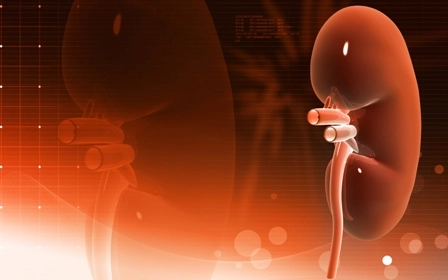
Labor Day marks the unofficial end of summer, and the start of preparation for code changes you’ll face next year. Now’s the time to review the 2016 CPT® changes so that you will be ready when January 1 rolls around.
According to the American Medical Association (AMA), which publishes the CPT® codes, you’ll have new codes in the kidney repair section of the CPT® manual to start using, plus codes to remove from your repertoire. By beginning the learning process now, you’ll save yourself headaches during year-end.
Good news: “These codes increase the specificity of procedure performed for ... percutaneous kidney cases,” says Jonathan Rubenstein, MD, director of coding and physician compliance for Chesapeake Urology Associates in Baltimore. “Any time a provider can more accurately describe the procedure performed, the reimbursement will be more accurate.”
Update Your Nephrostogram Injection Coding
If your urologist performs a nephrostogram or ureterogram, you will need to review several new codes.
You’ll use 50430 (Injection procedure for antegrade nephrostogram and/or ureterogram, complete diagnostic procedure including imaging guidance [eg, ultrasound and fluoroscopy] and all associated radiological supervision and interpretation; new access) and 50431 (... existing access) for your antegrade nephrostograms or ureterograms.
“I have about three physicians that will be utilizing these codes,” says Christy Shanley, CPC, CUC, billing manager for the department of urology at the University of California, Irvine. “I am wondering about Correct Coding Initiative (CCI) edits.” Experts expect that the first round of 2016 CCI edits will bundle both 50430 and 50431 with radiology supervision and interpretation (S&I) codes, since the descriptors for the new codes specifically state radiology S&I are included.
Old way: In the past you would have reported 50394 (Injection procedure for pyelography [as nephrostogram, pyelostogram, antegrade pyeloureterograms] through nephrostomy or pyelostomy tube, or indwelling ureteral catheter) and 74425 (Urography, antegrade [pyelostogram, nephrostogram, loopogram], radiological supervision and interpretation ) in these situations, says Michael A. Ferragamo, MD, FACS, clinical assistant professor of urology, University Hospital, State University of New York, Stony Brook.
“It is important that providers are accurately paid for the work provided,” Rubenstein says. “The increased specificity of the codes filled a lacking need. The new percutaneous codes allow more accurate coding for work that is performed that was not accurately captured by the codes that were currently being used. The increased specificity will allow for payment for the actual work provided.”
Revise Nephrostomy Tube Placement Coding, Too
For percutaneous nephrostomy catheter placements with the same diagnostic radiology procedures, the changes indicate that you’ll have seven additional new codes, as follows:
Code 50432 will replace reporting 50392 (Introduction of intracatheter or catheter into renal pelvis for drainage and/or injection, percutaneous) and 74475 (Introduction of intracatheter or catheter into renal pelvis for drainage and/or injection, percutaneous, radiological supervision and interpretation) together as you do currently, Ferragamo explains. In the past when reporting the change of a nephrostomy or pyelostomy tube you would report 50398 (Change of nephrostomy or pyelostomy tube) and 75984 (Change of percutaneous tube or drainage catheter with contrast monitoring [eg, genitourinary system, abscess, radiological supervision and interpretation]). Now you will now report 50435 as a single code, which includes the radiological S&I.
Starting January 1, you’ll report 50693 instead of 50393 (Introduction of ureteral catheter or stent into ureter through renal pelvis for drainage and/or injection, percutaneous) and 74480 (Introduction of ureteral catheter or stent into ureter through renal pelvis for drainage and/or injection, percutaneous, radiological supervision and interpretation).
Take Note of Associated Deletions
New codes aren’t the only changes to which you must pay attention each year. Don’t forget to check the deleted and revised code lists.
CPT® 2016 removes the following codes:
“These procedures were often billed with 50080 (Percutaneous nephrostolithotomy or pyelostolithotomy, with or without dilation, endoscopy, lithotripsy, stenting, or basket extraction; up to 2 cm) or 50081 (... over 2 cm) percutaneous nephrostolithotomy procedures,” Ferragamo says. “They have been replaced by the new CPT® codes described and noted above, which also include inherent guidance and other radiological imaging services.”
Additionally: You’ll also find radiological codes 74475 and 74480, commonly used in urology, deleted for 2016.
Revised: The code updates will also mean a revision of the descriptor for 50387, as follows (emphasis added): Removal and replacement of externally accessible transnephric ureteral stentnephroureteral catheter (eg, external/internal stent) requiring fluoroscopic guidance, including radiological supervision and interpretation.
“The term ‘nephroureteral catheter’ rather than the term ‘transnephric ureteral stent’ better describes clinically this type of catheter now used frequently in urological surgery,” Ferragamo explains.
